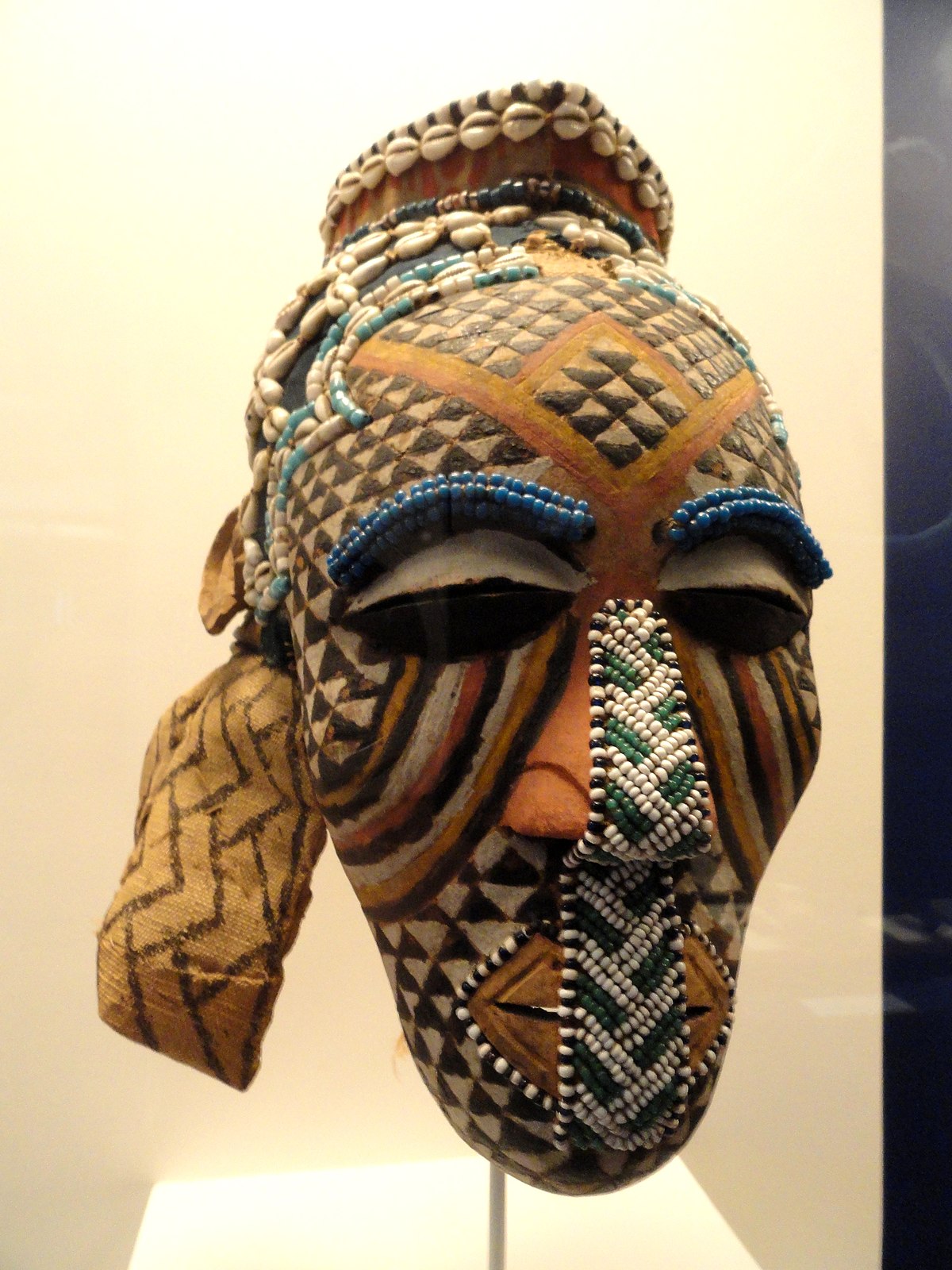I read an interesting quote this past week. “Kuba are people who cannot bear to leave a surface without an ornament.” I’m certainly no expert on the matter, but from all the photos of Kuba masquerade masks that I’ve looked at this past week, I’m inclined to agree.
For one thing, Kuba masks are often covered in brightly coloured beads. Red beads denote good fortune, while blue beads signify a high rank. White beads symbolize purity and faithfulness. I also found it very interesting to learn that these beads were often acquired through trade with Arab traders. I tend to think of today’s interconnected world as a recent phenomenon. It’s extraordinary to remember that global trade has in actuality been happening for thousands of years.
I also read about the masks of Mweel, meant to represent the beautiful and ideal woman. These masks can be distinguished by the diamond patterns on her smooth brow, and the black and white triangles within them that represent hearth and home. The masks representing women also feature lines down the cheeks that symbolize tears from all the pain that women must bear.
Finally, there are the masks that are covered in cowrie shells. Each shell must be the exact same size as the others in order to be used on the masks. As a result, the mask-maker must search through tens of thousands of shells in order to find enough of the same size. The amount of hours required to make just one mask is simply astonishing.
I also spent a bit of time this week searching for videos online of Kuba masquerades. After reading about them for two weeks, I wanted to see if any footage was available to actually watch one. Unfortunately, what I found was a lot of white people talking about Kuba masquerade masks that were either on display or for sale. Not exactly the cultural enlightenment I was looking for. However, I did find footage from a masked ceremony in Burkina Faso, and I was pleasantly surprised to discover that I now know enough about Kuba masquerades to recognize that what I was watching was something different. I suppose that’s something.
Next week I hope to find more information about Kuba mythology and the characters embodied in the masks. I’m still finding it difficult to find plentiful information on this topic, so like last week, I welcome all recs for resources.
Happy Sunday all!
Suggestions for artists I should check out? Please contact me with your ideas. I hope you enjoyed your daily helping of art!



